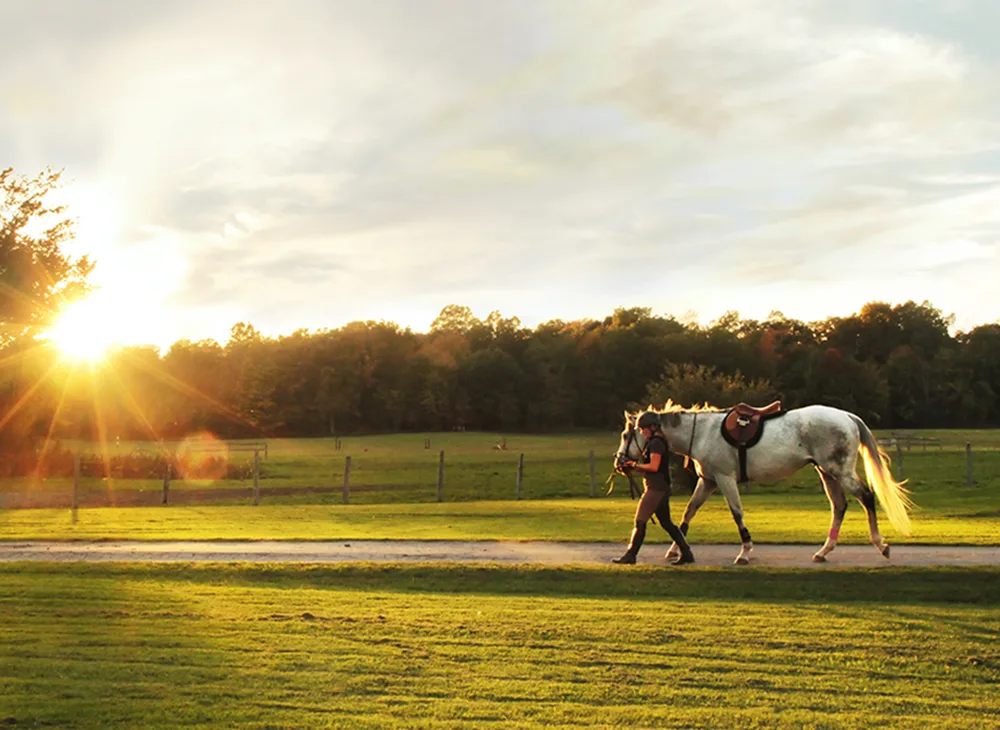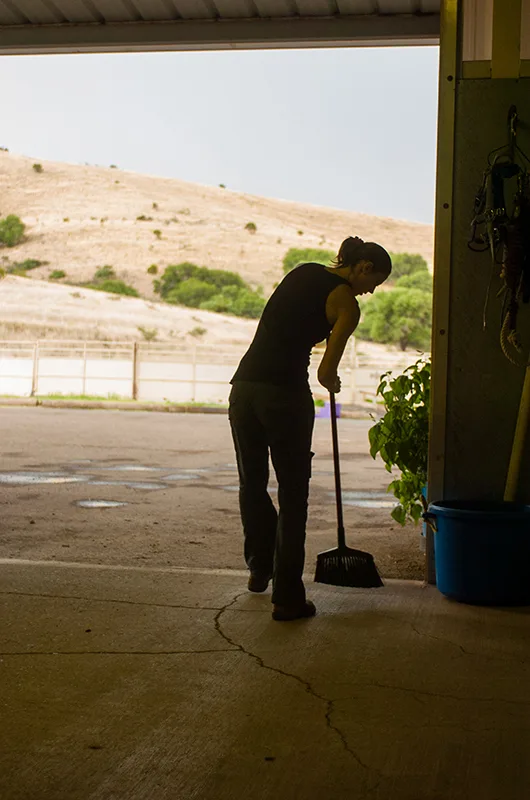This is Part 1 of an in-depth look at labor shortages and hiring challenges in the equestrian industry that first appeared in the June 12 & 19, 2023, issue of the Chronicle of the Horse. Check back tomorrow for Part 2, where we address the challenges of retaining employees once hired.
With the U.S. unemployment rate hovering around 3.4 percent and “help wanted” signs seemingly everywhere, the equestrian industry is likely to continue facing labor shortages now and into the near future. As a result, some equine business owners and consultants in the industry say it might be time to do some rethinking when it comes to labor.
“The issues of employment and retention in the equine industry are all across the U.S., and it’s an issue of great concern when we think about our sustainability as an industry,” says Karin Bump, a founder of the National Association of Equine Affiliated Academics and of Saddle Up NY in Madison County, New York.
The U.S. labor participation rate, defined as the percentage of working-age Americans who are either employed or looking for a job, has struggled for months to go much above 62 percent as efforts to lure more Americans into the workforce seem unsuccessful. The news is filled with stories of businesses struggling to find enough help to stay in business, and equine operations are no different.

“The problem is everywhere,” says Margie Hutchison, owner of Larkin Hill Farm, a boarding and training operation in North Chatham, New York. “Every restaurant, every store, everyone is crying for help.”
And everyone, she said, has the same story.
“It’s hard to find people, and even when people respond and say they will come in for an interview, often they don’t show up,” Hutchison says. “I hear that time and time again from lots of businesses, not just those in the horse industry.”
Finding experienced people is even harder, says Elizabeth David-Zoerhof, owner of Zoerhof Classical Horsemanship in Boyne City, Michigan. “It’s been hard for me and for friends around this region,” she says. “It doesn’t matter what discipline you are in; the problem is the same.”
ADVERTISEMENT
Laws And Logistics
Elisabeth McMillan, an industry consultant with EquestrianProfessional.com, says that, based on surveys she has conducted, the severity of the labor problem varies among equestrian businesses depending on such things as the size of operation, location, types of employees, and how employees are managed and treated.
She notes that equine businesses and show barns that are trying to grow are having a particularly hard time finding enough grooms to help at home and at shows. “There are not enough available,” she says. “It is highly competitive, and therefore the cost of per-day help can be prohibitive.”
There are also variations in how employees are classified, McMillan explains. “Most horse business owners do not classify their employees as employees,” she says. “They improperly classify them as private contractors. This exposes them to multiple risks.”
These risks include an Internal Revenue Service audit and uninsured employees. “The reason there are so many misclassifications is that when employees in the horse industry are classified properly, the costs of payroll taxes and workers compensation insurance are significant enough that it can result in the business operating at a loss,” McMillan adds.
Lois New, owner of Bon Accord Lusitanos in Ballston Lake, New York, discovered the truth of that when she opted to go to full-time staff. “It’s a big decision to go to full-time employees because there are so many responsibilities you take on with that, including employment regulations and costs,” she says.
The labor situation can be even harder for equestrian operations that either can’t afford or simply don’t need full-time staff. “Part of the problem is I don’t have full time. I don’t need an all-day person, and that makes a difference,” Hutchison says. “It means that I also need someone local because no one is going to drive an hour for a few hours of work.”
Adding to the challenge of using part-time, or what many barns call contract work, is the challenge of skirting labor rules, McMillan says. “When it comes to private contractors some horse show grooms may be an exception—if they are hired at the show, use their own tools and set their own hours—but it is a cloudy area where mistakes and penalties present high risks.”
ADVERTISEMENT
Equine industry consultants say that pay and the ability to offer a full-time position might be attractive to some job applicants, but it is no longer attractive to all.
David-Zoerhof says she is working to tap into retired workers. “I target those who are retired and want to stay active but don’t want a full-on job and prefer to work a few hours here and there,” she says. And, like many barn owners, she also relies on family. “My mom helps as much as she can as well,” she adds.
Staff development programs are something that many barns, even smaller ones, will likely need to create in order to attract qualified staff, says Bump. “When new employees come in, you need to make sure they feel that their work is valued and that there is a place for growth in some capacity, even if it is that the person can start their own small business out of the stable.”

McMillan agrees: “The horse professionals that report success with hiring, and keeping, good employees, report similar protocols about how they treat their employees. They onboard their employees. They keep them engaged by being generous with education and encouragement. They provide feedback. The employees are valued as an important member of the barn. They pay fairly but not excessively, average of $15.00 per hour for at-home work, more at horse shows. The people who complain about their employees suffer the most with employee churn. They seem to hire them, expect them to figure out the job, and then punish them when they don’t.”
In some cases, it is the part-time, rather than full-time employment that can be attractive particularly for those who want flexibility in their work, says Holly Fisher, operations director at Hilltop Farm Inc. in Colora, Maryland.
“In our recent recruitment efforts, we’ve found the need to broaden the scope of our job searches, which has also meant adapting our positions,” she says. “In the past, we were looking for full-time hires with select working student/intern positions. Now we’re finding more success with part-time positions that offer increased flexibility in scheduling.”
This is Part 1 of an article that appeared in the June 12 & 19, 2023, issue of The Chronicle of the Horse. You can subscribe and get online access to a digital version and then enjoy a year of The Chronicle of the Horse and our lifestyle publication, Untacked. If you’re just following COTH online, you’re missing so much great unique content. Each print issue of the Chronicle is full of in-depth competition news, fascinating features, probing looks at issues within the sports of hunter/jumper, eventing and dressage, and stunning photography.














